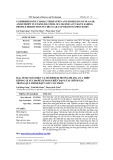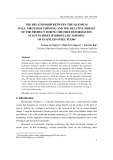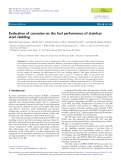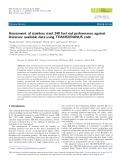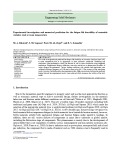
Use of stainless steel
-
This research provides a comprehensive investigation of the planar anisotropy in stainless steel SUS 304. Constitutive modeling approaches, employing both associated and non-associated flow rules, using quadratic functions have been applied in the simulation process.
 10p
10p  viengfa
viengfa
 28-10-2024
28-10-2024
 2
2
 2
2
 Download
Download
-
This article presents the establishment of the relationship between the maximum wall thinning and the relative height of the product during the free deformation stage in sheet hydrostatic forming of stainless steel SUS304. The numerical simulation and experiment are carried out using different input parameters for comparison and evaluation.
 13p
13p  viyuhi
viyuhi
 26-03-2025
26-03-2025
 2
2
 0
0
 Download
Download
-
This paper addresses the SS corrosion behavior in a modified fuel performance code in order to evaluate its effect on the global fuel performance. Then, data from the literature concerning to SS corrosion are implemented in the specific code subroutines, and the results obtained are compared to those for Zircaloy-4 (Zy-4) under the same power history.
 6p
6p  christabelhuynh
christabelhuynh
 30-05-2020
30-05-2020
 24
24
 1
1
 Download
Download
-
The aim of this paper is to present the obtained results concerning the verification of the modified TRANSURANUS code version against data collected from the open literature, related to reactors which operated using stainless steel as cladding.
 8p
8p  christabelhuynh
christabelhuynh
 30-05-2020
30-05-2020
 11
11
 1
1
 Download
Download
-
This work investigated and predicted the fatigue life durability of Austenitic Stainless Steel 316L at room temperature due to its importance in plant industries worldwide. Modelling and simulations were performed to clarify the fracture as well as stress distribution using integrated mechanism.
 10p
10p  tohitohi
tohitohi
 19-05-2020
19-05-2020
 19
19
 1
1
 Download
Download








